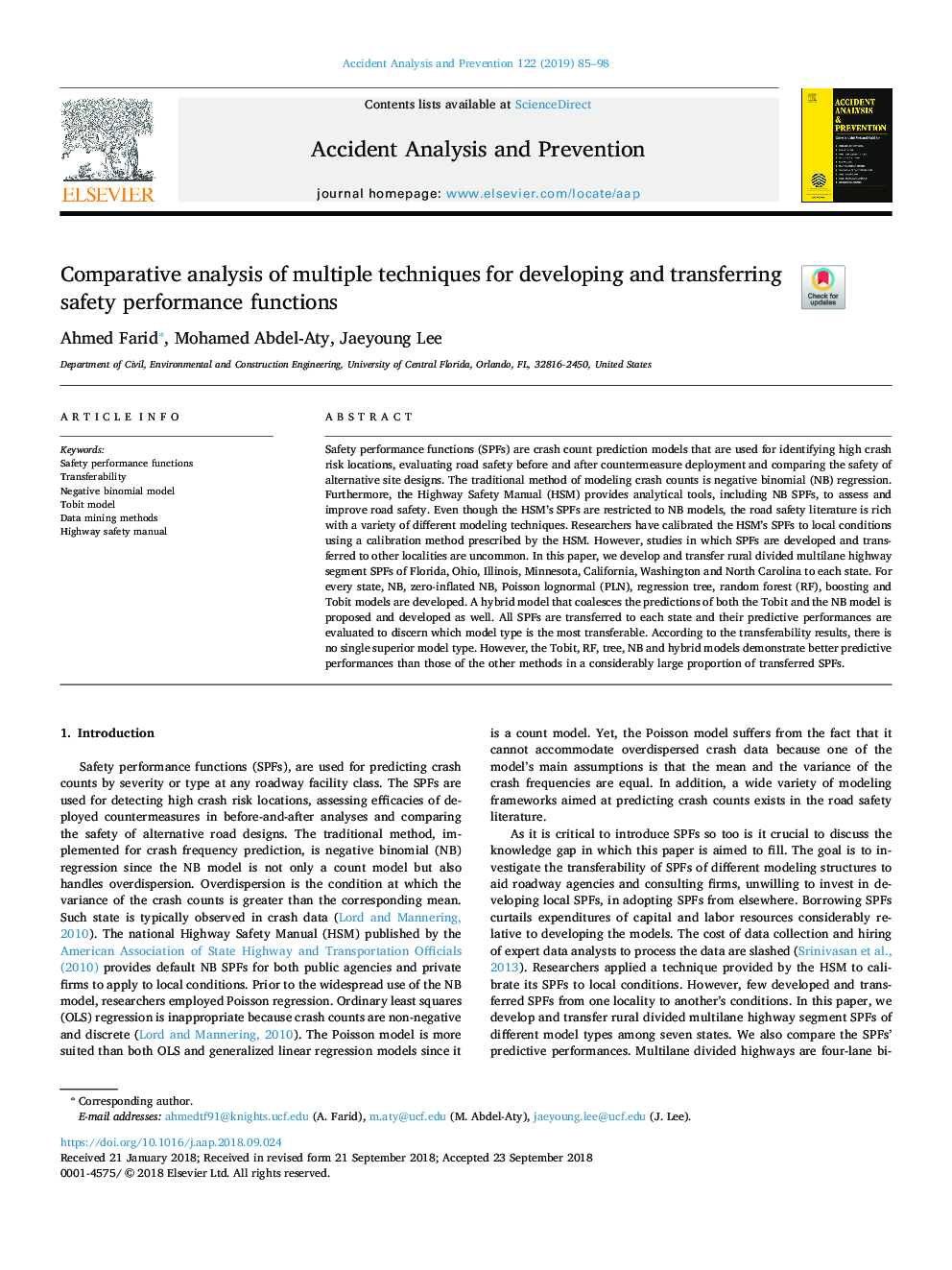| Article ID | Journal | Published Year | Pages | File Type |
|---|---|---|---|---|
| 11012370 | Accident Analysis & Prevention | 2019 | 14 Pages |
Abstract
Safety performance functions (SPFs) are crash count prediction models that are used for identifying high crash risk locations, evaluating road safety before and after countermeasure deployment and comparing the safety of alternative site designs. The traditional method of modeling crash counts is negative binomial (NB) regression. Furthermore, the Highway Safety Manual (HSM) provides analytical tools, including NB SPFs, to assess and improve road safety. Even though the HSM's SPFs are restricted to NB models, the road safety literature is rich with a variety of different modeling techniques. Researchers have calibrated the HSM's SPFs to local conditions using a calibration method prescribed by the HSM. However, studies in which SPFs are developed and transferred to other localities are uncommon. In this paper, we develop and transfer rural divided multilane highway segment SPFs of Florida, Ohio, Illinois, Minnesota, California, Washington and North Carolina to each state. For every state, NB, zero-inflated NB, Poisson lognormal (PLN), regression tree, random forest (RF), boosting and Tobit models are developed. A hybrid model that coalesces the predictions of both the Tobit and the NB model is proposed and developed as well. All SPFs are transferred to each state and their predictive performances are evaluated to discern which model type is the most transferable. According to the transferability results, there is no single superior model type. However, the Tobit, RF, tree, NB and hybrid models demonstrate better predictive performances than those of the other methods in a considerably large proportion of transferred SPFs.
Keywords
Related Topics
Physical Sciences and Engineering
Chemical Engineering
Chemical Health and Safety
Authors
Ahmed Farid, Mohamed Abdel-Aty, Jaeyoung Lee,
